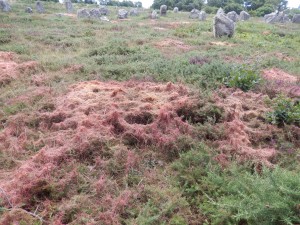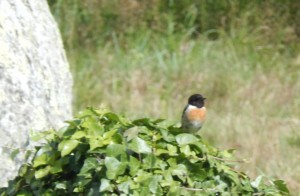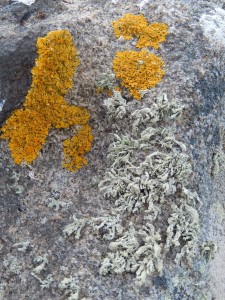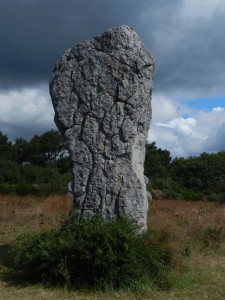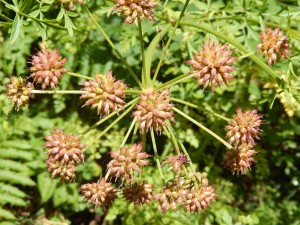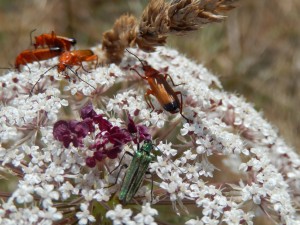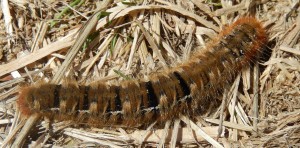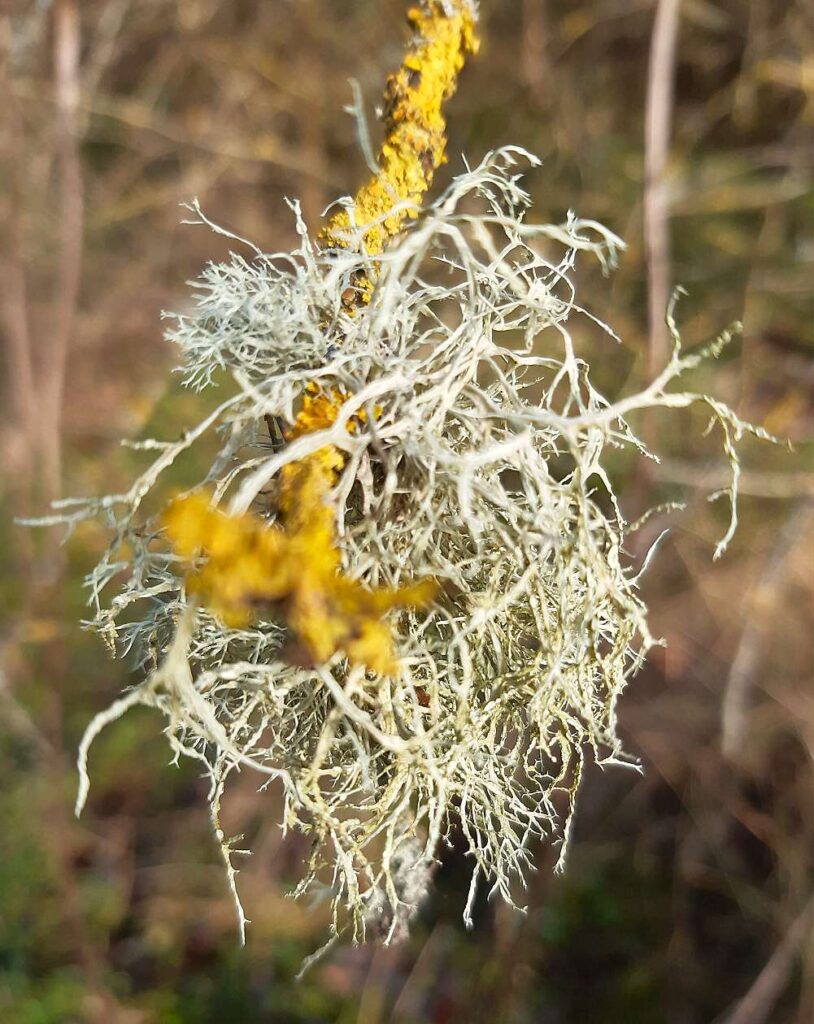
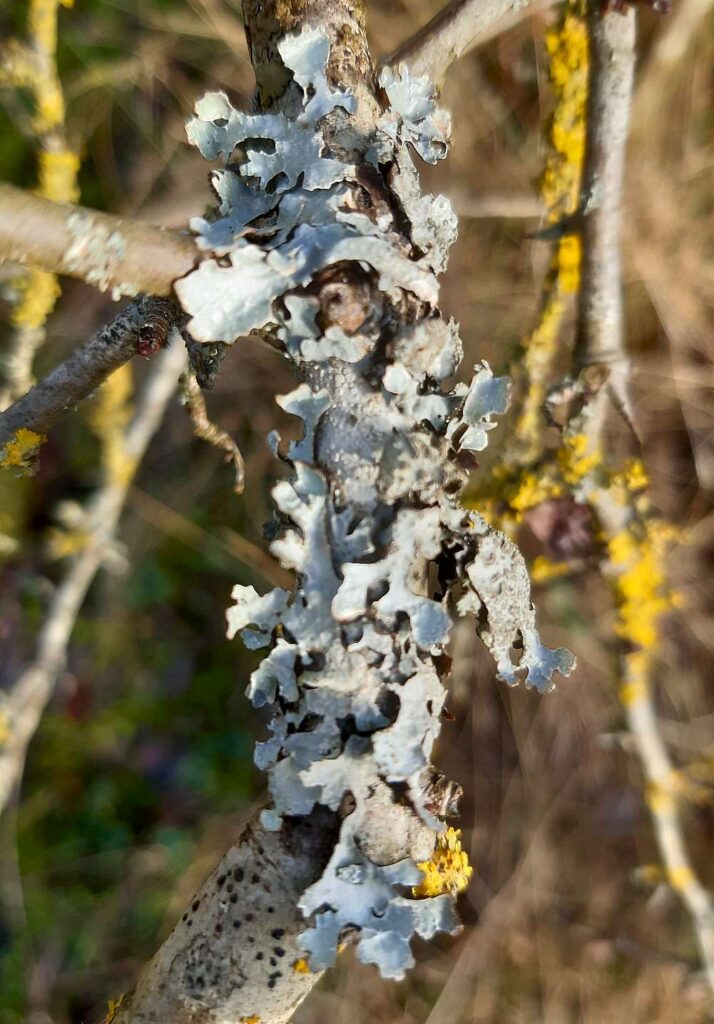
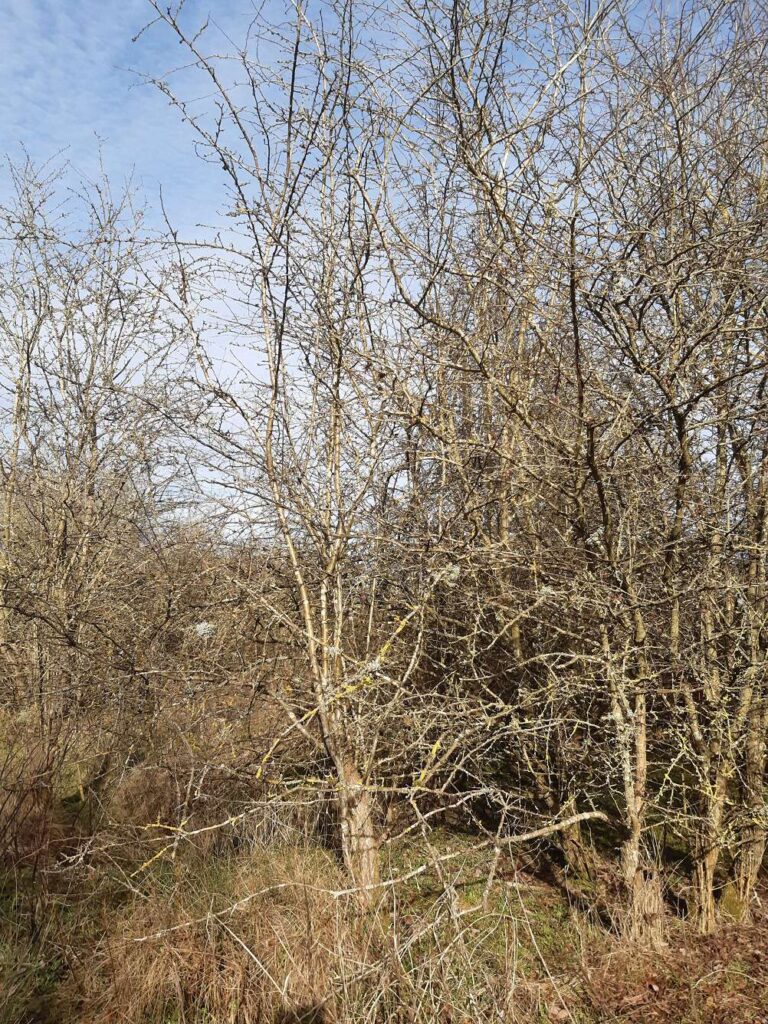



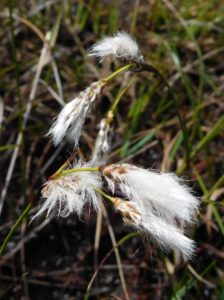
A bright, breezy, and much cooler day (16 C, not 29 any more) was just perfect for a visit to Thursley. Perhaps many of the dragonflies decided not to fly: I saw one Common Darter and (I think) one Brown Hawker, and nothing else, so anyone who went along hoping to see the Hobbies hawking for dragonflies by the dozen will have had a wasted trip (and indeed I saw several extravagantly camouflaged types with gigantic telescopes standing about looking very bored).
But everything else was in full swing. A Cuckoo called from the pinewoods. A Curlew gave its marvellously wild, bubbling call from the open marsh. A Dartford Warbler gave me the best view ever of its rufous belly and long tail, as it sat low in a scrubby Birch, giving its rasping anxiety call repeatedly. I enjoyed the view through binoculars. By the time I remembered to take a photo it was half-hidden again.
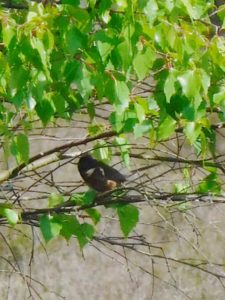
A Stonechat gave its scratchy call from a small Birch, then hopped up to some Pine trees (so, a distant shot).
A few Chiffchaffs called from the woods; plenty of Whitethroats sang from the regenerating Birches that are encroaching on to the heath. A Green Woodpecker gave its fine laughing call.
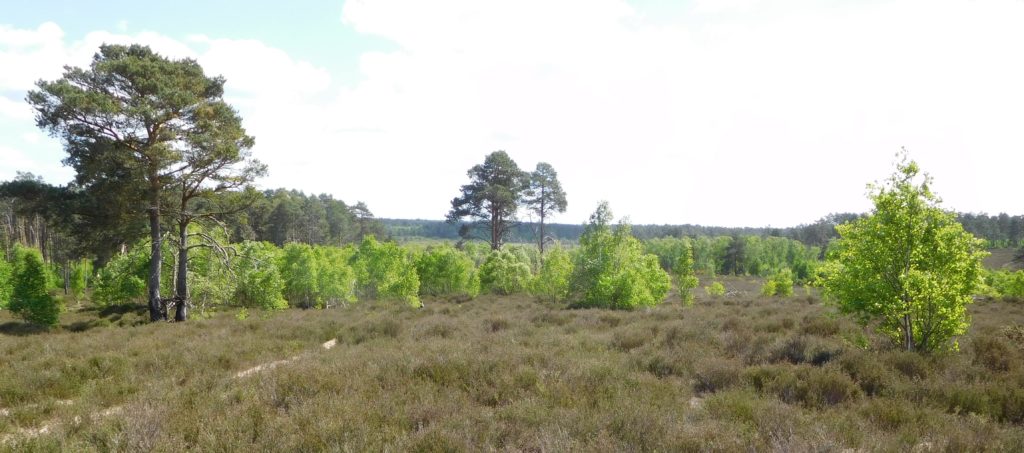
So I heard three warblers today to add to the four yesterday, so seven singing warblers in 24 hours, a little bit special.
The lichen flora on the heath was quite beautiful, with Usnea beard lichen, leafy Parmelia, bristly Ramalina (all on old Heather), and elegant Cladonia potscourer, cup, and stalk lichens (three species).
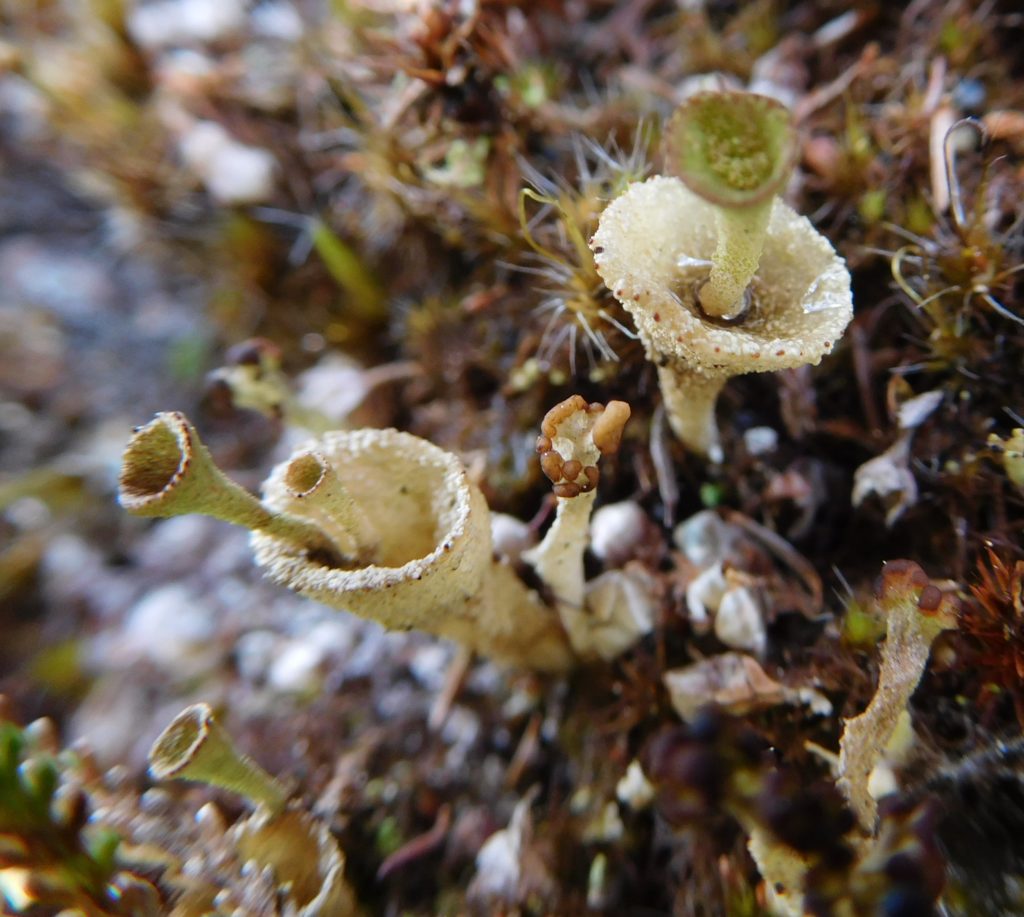
A Linnet sang from the top of a Birch. Goldfinches twittered and flitted about.
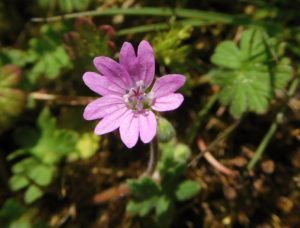
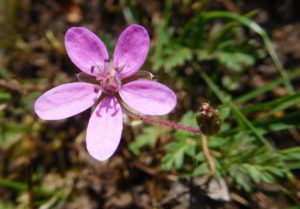
And on the path out, a Hobby leapt from a tree right in front of me, where it had been sitting watching the bog pools, waiting for dragonflies to come out and display themselves. It flew round and up, then circled, soaring, away to the south. Perhaps it was the one the twitchers had been waiting to see flying all morning.

Well, after 7 Vole Patrol postings, and some very cold, wet and early mornings, I felt like enjoying a nature walk in the sunshine, away from Woodmice. But as I left town I found myself in fog, not too thick to be sure, but fog nonetheless.
I was rewarded, however, with the lovely sight of the willows along the lake seeming to float, isolated in the smooth sea of soft gray.
As the mist slowly lifted, a pair of Goosanders and a pair of Goldeneye (the male displaying, the female in tow a yard behind) could be seen through the mirk.
I couldn’t get away from the mammals, either. I was pleased to see not just the usual Muntjac prints along the path, but Roe Deer too. A little way further, and there was a Wood Mouse hopping in a relaxed way across the path, before diving down its hole.
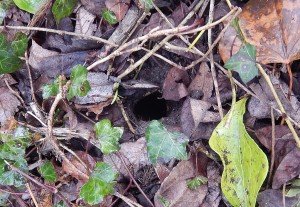
Among the birds calling were Green Woodpecker (finely), Great Tit, Song Thrush, Cetti’s Warbler. A Heron and a Parakeet flew overhead. Wood Pigeons and Carrion Crows watched warily.
The damp air had another good effect: the lichens looked wonderful, and even the bristly Ramalina were soft.
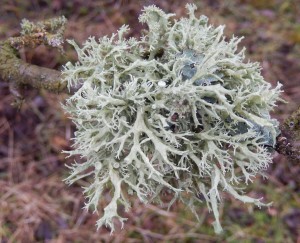
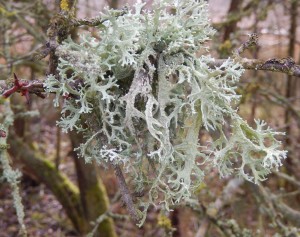
It was nice to see the lichens flourishing so close to London (and Heathrow): these little fungus/alga plants are very sensitive to pollution, and when I was a boy they were almost impossible to find anywhere near a city, so conservation stories can be happy.
After a chilly grey start, the clouds dispersed and it turned into a brilliant winter’s day, the sky crisp blue, the air clear. I grabbed the telescope and went down to Wraysbury to see if the winter ducks had finally arrived.
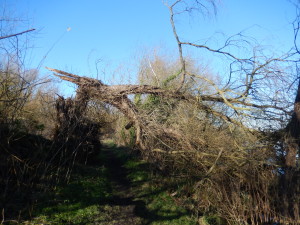
The first thing I saw was a sign of the violence of the recent storms; a Poplar, always a fast-growing and short-lived tree, had snapped off and fallen over the path. But a way had already been cut beneath it.
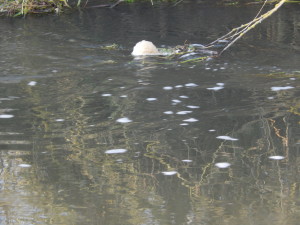
The next sight was a sad one: for the first time I can remember, the River Colne was obviously polluted, with lumps of foam drifting rapidly by, or caught on branches in the normally clean water. The river supports Kingfishers, wagtails and assorted waterfowl, so I hope the cause is a brief one-off event.
On the lake were four or five Goldeneye, the males waving their heads up and down to signal to the females – or to warn off rival males – the bold white patches on the sides of their heads visible without binoculars.
A little further on was a small party of Goosander, a male and two redhead females, their long serrated hooked bills and distinctive long bodies instantly recognisable, a sign of winter in this part of the world as they come down from their chillier breeding grounds.
Then, just as I was moving on, the bold whiteness of a male Smew caught my eye. With him was a redhead female, both ducks far smaller and shorter than the rather big Goosanders. A few grebes and tufted ducks vied unsuccessfully for my attention.
Some of the poplars, half-fallen, offered normally out-of-reach branches for close inspection. Along with the usual Common Orange Lichen and the grey leafy lichens (Parmelia sulcata and such) were a few bristly tufts of Ramalina, easily told for being rather stiff, slightly forked, and the same grey-green on both sides. You’ll probably have seen the genus on rocks just above the high-tide mark by the sea, or on big old stone-age megaliths. It’s a lichen that demands clean air, so it’s rather a nice surprise to see it so close to Heathrow Airport. Perhaps the prevailing Westerly winds keep most of the atmospheric pollution away. There is no doubt, though, that London’s air quality is far better than it was a generation ago: hardly anyone burns sulphurous coal any longer, and while there are hotspots of nitrogen oxides (Heathrow for one, Oxford Street for another) and diesel particulates, these aren’t as harmful to lichens as sulphur dioxide was.
Around the corner into the area of wet grassland and scrub, I was delighted to be surprised by two Red Kites circling silently overhead against the brilliant blue, their long wings and forked tails a welcome sight that would have been familiar to Shakespeare but was missing until their recent reintroduction to lowland Britain. There was plenty of professional angst about whether the new Chiltern population should be encouraged to interbreed with the remnant Welsh population: but in the event, the birds easily dispersed the couple of hundred miles involved, and soon the gene pools mixed all by themselves.
Up on the smooth green hill that was the old rubbish mountain and is now home to a dozen ponies and horses, the distant chack-chack of Fieldfares drifted to my ears. At least fifty of them were standing, watchful but constantly feeding, on the bare grass, flying up and chattering at the least warning. A solitary Mistle Thrush stood big and grey with its boldly spotted breast among them; a flock of a hundred Starlings moved flightily between trees and grass. A Wood Pigeon panicked and all the Fieldfares flew into the trees, still chacking. I splashed through the ankle-deep mud and puddles on the somewhat flooded path to the road.
